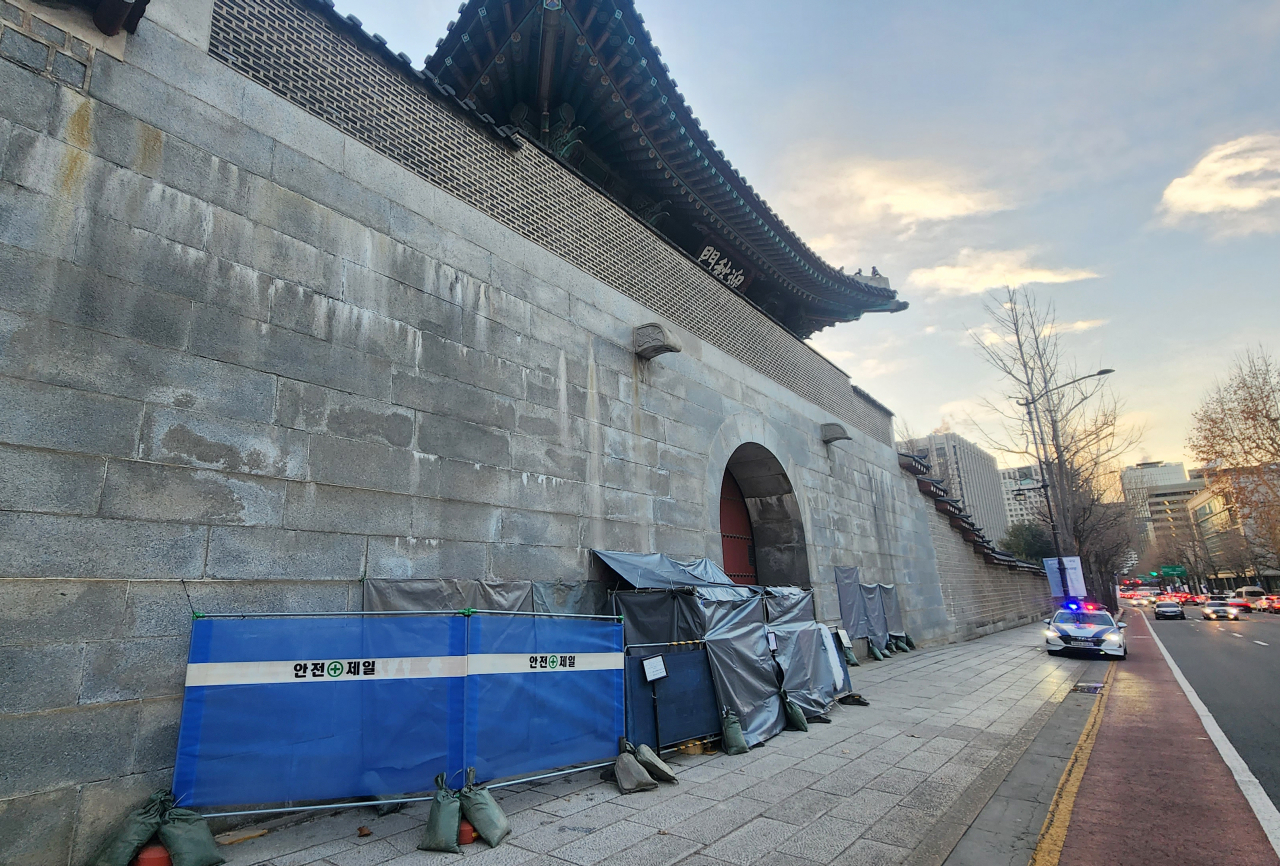Gyeongbokgung graffiti suspect turns himself in
Officials still searching for two others in separate attack
By Park Jun-heePublished : Dec. 18, 2023 - 15:47

Less than a day after another piece of graffiti defaced one of South Korea’s most significant cultural heritage sites, a suspect turned himself into the police, according to officials on Monday.
The suspect, who is believed to be a man in his 20s, voluntarily surrendered to the Seoul Jongno Police Station at around 11:45 a.m. and underwent police questioning about the crime, including whether he had an accomplice.
Police are still looking for two suspects who had vandalized the walls of Gyeongbokgung on Saturday.
On Sunday at around 10:30 p.m., the Seoul Jongno Police Station received another report of a separate graffiti attack at the palace.
The three-meter-long and 1.8-meter-high graffiti was discovered on the walls of Yeongchumun, the west gate of the palace, which the Cultural Heritage Administration is currently restoring after Saturday’s desecration.
It consisted of the name of an indie rock band called The Black Skirts, along with the title of a song by the band and a heart shape spray-painted in red, according to police.
The police suspect that the incident may be a copycat crime of the graffiti incident on Saturday, adding that they plan to examine the connection to the previous crime once an arrest has been made. They also plan to hold the suspect accountable for violating the Cultural Heritage Protection Act.
Built in 1395, Gyeongbokgung in Jongno-gu, central Seoul, is a state-designated historic site, meaning all the walls surrounding it are recognized as cultural heritage.
Under the current law, the Cultural Heritage Protection Act bans writing, drawing or carving on designated cultural heritage. Violation of the law may result in an order for substantial repair and restoration of the state-designated cultural property, a prison sentence of up to five years or a fine of up to 50 million won ($38,500).
The incident comes after an unidentified suspect vandalized a wall of the Joseon era (1392-1910) royal palace with red and blue spray paint on Saturday from around 1:42 a.m. to 2:44 a.m. The perpetrator repeatedly sprayed the term “free movie” in Korean and the web addresses to illegal video-sharing and streaming platforms across sections of the wall spanning some 44 meters.
The graffiti was painted on the left and right sides of Yeongchumun and the side gate near the National Palace Museum of Korea, according to the CHA. Similar graffiti, likely done by the same suspect, was spotted on the walls of the Seoul Metropolitan Police Agency, adjacent to Gyeongbokgung.
Soon after the incident, the CHA temporarily covered up the graffiti and said it would deploy preservation specialists to wipe off the graffiti and restore the affected parts. It also plans to add 20 additional cameras outside the walls of the royal grounds from the current 14.
Police intelligence and detective teams have also jointly launched a probe into Saturday’s case, and they suspect two people are behind the crime.










![[Hello India] Hyundai Motor vows to boost 'clean mobility' in India](http://res.heraldm.com/phpwas/restmb_idxmake.php?idx=644&simg=/content/image/2024/04/25/20240425050672_0.jpg&u=)








